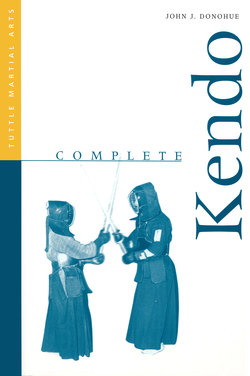Читать книгу Complete Kendo - John J. Donohue - Страница 10
На сайте Литреса книга снята с продажи.
ОглавлениеPART TWO
WATER
The symbolism of water permeates writing about the martial arts. Liquid's yielding nature—giving way when pushed—combined with its awesome power seems to embody the adaptive fluidity we seek in martial training. Physically, we need to adapt the characteristics of water. Our minds should emulate the properties of water as well. The proper state for the trainee's mind is mizu no kokoro, "mind like water"—that is, calm, unruffled, and perfectly reflecting its surroundings. The message here is that the master martial artist's mind is not roiled with surface distractions. His focus is so perfect that no extraneous and distracting thoughts intrude. Her calm is so perfect that it permits an instantaneous reaction to whatever the opponent does—in much the same way as a calm pool of water immediately reflects whatever is around it. In training, there are a multitude of things that can create the gaps in concentration called suki. The way to overcome these gaps is through continuous practice of Kendo's basics, so that our actions and reactions become almost automatic and unthinking—they flow like water.
The process of learning Kendo is at once simple and difficult. It is simple (perhaps "fundamental" would be a better term) because it involves learning how to use our physical and mental capacities in the correct way, and this is something that human beings instinctively respond to and yearn for. Some of my Japanese martial arts instructors said that, no matter how awkward or painful or elusive techniques may initially appear, they are "natural" and so are in reality easy to do. It is only the accretion of bad habits—the result of a life led without training—that makes the acquisition of skill seem difficult. This is, of course, an attitude strongly influenced by both Taoism and Zen.
The process of learning to be natural—of unlearning bad habits—is nonetheless a frustrating and disconcerting experience. It involves the reeducation of the person into different approaches to things as seemingly simple as moving and breathing, balancing and seeing. In some ways, entering into the study of Kendo is like becoming an infant again—we are starting from the beginning and acquiring the skills necessary to be fully human.
THE LESSON
Overview: The basic physical aspect of all Kendo can be understood as being built upon four central elements that form the heart of Kendo's fundamental techniques, or kihon:
Stance/Kamae
Footwork/Ashisabaki
Gripping the Shinai/Tenouchi
Swinging the Shinai/Suburi
Beginning students tend to focus on the exterior, flashy aspects of Kendo, but to be effective, these more dynamic manifestations of Kendo's principles must be based on a solid foundation of less glamorous skills.
In the pursuit of Kendo, it is best to go slowly and constantly drill and train in basics: how to stand, how to move, how to wield the shinai. Only a diligent pursuit of these more pedestrian aspects will yield an effective and aesthetically pleasing external form.
Kendo, although simple, in that is based on fundamental principles, is also extremely subtle and complex in the way it brings these principles into action. Since the novice will most often experience this in the process of training, an experience often as confusing as it is enlightening, we will explore the basics of the art by emulating a training session.
1. Beginnings
entering the dojo
Most training will take place in dojo of one sort or another. While it is not unusual for practice to be held out of doors in all kinds of weather, the novice swordsman will learn most of his or her early lessons treading the hardwood floors of a traditional training hall.
A dojo is any place set aside for training. The requirements for a Kendo dojo are relatively simple. The ceiling must be high enough to permit the shinai to be swung freely overhead. The floor should be level and smooth. Dojo floors are usually made of polished hardwood. The better ones are loaded on springs to absorb the impact of movement. There is usually an area marked out for sparring matches. Traditional Kendo dojo partake of the structure and simplicity of traditional Japanese architecture. The most significant point in the room is the shomen or kamiza, referred to in Part I, Ground. Movement in and out of the dojo is made in reference to the shomen.
Shomen
The student, garbed in the practice uniform, is ready to embark on the first lesson (see the section on the uniform in Part I, Ground). She begins to step out onto the practice floor.
As in all other aspects of training, there are a number of points to consider here. We will assume that the hakama has been tied properly and that the student is clean and neat and ready to train. Before stepping out, she must first determine where the shomen is located. Movements on and off the training floor are conditioned by this seemingly tangential fact.
